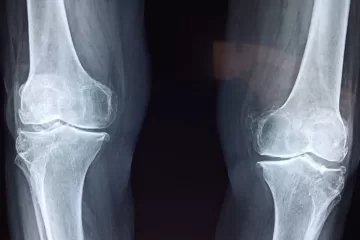Autism and camouflaging
Published by Tony Attwood on
Autism and camouflaging
Why camouflage autism?
Gradually a young autistic child will come to realise that they are different to their peers. They notice that their peers are able to easily and accurately ‘read’ social situations and people’s thoughts, feelings and intentions, an ability that an autistic child finds elusive. There are also differences in interests, learning style and sensory perception. An autistic child can have a personality characteristic of being an extrovert, that is wanting to connect and engage with their peers. Unfortunately, their social approaches to play and talk may be rejected, and they experience teasing, humiliation, and bullying from their peers for being different.
A characteristic of autism is to seek patterns and systems, and this can be applied to social situations. An autistic child can be very sensitive and reactive to making a social ‘error’ and quietly observe the play and social interactions of their peers from a discrete distance. Their intention is to imitate their peers. They become a ‘child psychologist’ exploring and analysing the dynamics, personalities, and social conventions of their peers. Once they have a ‘script’ they may be brave and launch themselves into social play in the hope that they will be accepted and liked. This process has been described as camouflaging autism or creating a ‘mask’ or alternative persona.
There have been at least 25 research studies exploring autism and camouflaging from early childhood to the mature years, with a recent review by Julia Cook, a friend and colleague of Michelle and Tony (Cook et at 2021). This article autism and camouflaging is based on our extensive clinical experience of the art of camouflaging by our autistic clients and friends and the research literature.
Camouflaging is an autism adaptive mechanism that can be acquired by autistic males and females to achieve social acceptance and connection as well as to be valued by others and to avoid being bullied or abused. We recognise gender differences in camouflaging in that those who identify as being a female, camouflage more than those identifying as male, across more situations, and more frequently and for a longer duration. They are more likely to perfect the art of camouflaging autism. However, autistic males may also use camouflaging in everyday life and also when dating to achieve a long-term relationship. Their neurotypical partner may only become aware of their autistic characteristics after the relationship has been formalised.
Camouflaging can commence in early childhood but not be conspicuous to parents and teachers. The young autistic child can be very aware of their social errors or ‘clumsiness’ and sometimes the ‘mask’ will slip. Their autism will be revealed. However, extensive practice, especially in the teenage years, leads to an increasing proficiency in ‘acting’ neurotypical in social situations, such that the authentic self is rarely seen by peers, but may still be recognised by parents at home.
Psychologists and parents recognise the consumption of considerable mental energy, to intellectually rather than intuitively, process social cues and responses. This requires good
executive functioning skills. We know that autistic females often have greater executive functioning skills compared to autistic males which may contribute to camouflaging success.
There is also the requirement to cognitively supress aspects of autism such as reacting to aversive sensory experiences and the inclination to reduce stress by mannerisms such as rocking. These autistic characteristics can be supressed and compressed but subsequently released in solitude or at home. While camouflaging may be a temporary ‘cure’ for autism, it can lead to a greater expression of autism at home.
Camouflaging behaviours
Julia Cook has identified several categories of camouflaging behaviours. These can eventually become automatic, with the autistic person not consciously aware of what they are doing. However, these behaviours still require the consumption of considerable mental energy.
Masking
These behaviours are designed to limit or avoid self-disclosure in a conversation.
There are also conscious modifications to gestures to ensure synchrony and equivalence to the conversation partner.
Consideration is also given to physical appearance to ‘wear the same uniform’.
Innocuous socializing
Maintaining eye contact or at least the appearance of eye contact, such as looking at the other person’s forehead or the bridge of their glasses.
Mirroring the other person’s accent, phrases, and facial expressions.
Smiling frequently when speaking or listening.
Using verbal and gestural encouragers such as nodding and saying “Oh really” at key points in the interaction.
Giving compliments to the other person.
Guiding or maintaining the topic of conversation or activity to an interest of the other person.
Apologises or provides explanations for perceived social errors.
Learns the ‘small talk’ and topics of interest of their peers.
Avoids appearing overly knowledgeable or making jokes.
Active self-preservation
Find points of commonality.
Asking questions.
Reciprocity when listening and talking during the interaction.
Consequences of camouflaging autism
As clinicians we are increasingly recognising that camouflaging autism is associated with increased levels of fatigue and stress, anxiety (general and social) and depression and suicidal ideation. Thus, camouflaging can contribute to secondary physical and mental health diagnoses.
Camouflaging is potentially emotionally and cognitively exhausting and often requires prolonged periods of solitude to recover. There can also be a tendency, even after successful social engagement, to conduct a social ‘autopsy’ and to ruminate for some time on social performance and the interpretation of ambiguous or subtle social cues.
Being successful at camouflaging autism can lead to greater social expectations from friends and employers. This can lead to wanting to ‘stop this train’ and that nobody recognises the degree of stress and self-doubt.
Psychologically, camouflaging creates a feeling of being disconnected from the authentic self. There can be thoughts that the real self must never be revealed as that would destroy all the work undertaken to achieve social connections and acceptance. Being unable to express the authentic self can also contribute to feelings of low self-worth and depression.
Camouflaging can also delay consideration of a diagnostic assessment for autism, often until a secondary psychological condition is identified such as an eating disorder, gender dysphoria and self-harm.
Resolution of camouflaging autism
Our clinical experience, recently confirmed by research studies, is that confirmation of a diagnosis of autism and maturity can resolve many of the issues associated with camouflaging. The diagnostic process and discovering the characteristics of autism is often central in the development of self-awareness and self-acceptance. The autistic person no longer feels ashamed and reluctant to reveal the real self. Authentic socializing becomes an alternative to camouflaging.
We have created an eight-session programme for autistic teenagers called ‘Being Me’ which focuses on discovering the real self and communicating who you are to adolescent peers. The programme includes group activities for the participants to explore and express themselves,
improve self-esteem and self-acceptance and enhance social skills as well as coping with potential social rejection.
We have also noted that mature autistic adults have decreased desire to camouflage their autism as it is too exhausting, not seeing the point anymore and not being ashamed of who they are. Better late than never.
As clinicians we recognise there needs to be guidance on how to authentically socialize and recognition of safe situations to learn how to express the authentic self. There is also the issue of whether and how to disclose having autism to friends and colleagues. Many of our autistic adult clients have been surprised how accepting friends have been and how employers have made appropriate adjustments. The autistic person is also probably aware that being the authentic and not so mentally exhausted will help reduce feeling depressed and exhausted. There is no need to camouflage when people understand and accept autism and fortunately society is becoming more aware of autism and associated qualities and difficulties, and we have noticed a greater acceptance of autism at school and work.
In summary
Camouflaging autism is a tempting means of achieving social acceptance. However, in the long-term, camouflaging will affect mental health and inhibit the expression of the authentic self. Be true to who you really are.
Further information and resources
We have created a presentation on autistic girls and women that will include a major section on autistic camouflaging. The presentation will be webcast on the 25th of March with more information at www.attwoodandgarnettevents.com.
This webcast will be of interest to:
Autistic teenagers and adults
Their parents and family members
Psychologists
Social workers
Psychiatrists
Teachers
Allied Health
References
For those seeking to read the relevant research literature we recommend:
Bernardin et al (2021) autism 25 1580- 1591
Bernardin et al (2021) JADD 51 4422-4435
Bradley et al (2021) Autism in Adulthood 3 in press.
Cage and Troxell-Whitman (2020) Autism in Adulthood 2 334-338
Cook et al (2021) autism 25 in press
Cook et al (2021) Clinical Psychology Review 89 in press.
Halsall et al (2021) autism 25 2074-2086
Hull et al (2021) Molecular autism 12:13
Miller, Rees and Pearson (2021) Autism in Adulthood 3 in press.
Scheerer et al (2020) Autism in Adulthood 2 298-306
Tubio-Fungueirino et al (2021) JADD 51 2190-2199
For autistic adolescents and adults and their families, we recommend the books on autism and camouflaging published by Jessica Kingsley Publishers with more information at www.jkp.com


